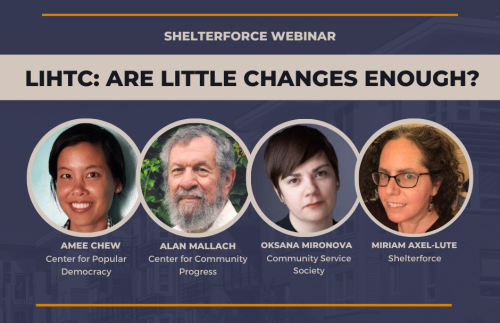In the Spring 2009 issue of Shelterforce, now available to view online at www.shelterforce.org, Nandinee K. Kutty, an author and economist who works in housing and urban policy worries that despite the Homeowner Affordability and Stability Plan and Making Home Affordable, housing discrimination will continue to plague the market, as will the myth that the housing crisis resulted from extending homeownership and home mortgage credit to historically underserved groups.
Kutty argues that “Fair lending is the law,” and “it’s not option or something we practice only when it’s convenient for banks,” and that “we are where we are because of decades of discrimination.”
While those in the Rooflines sphere are likely to agree with her, the story’s overall takeaway is an important one to repeat over and over again because there are myriad external forces working to distract the country with false explanations for the economic meltdown. Kutty refers to the “myth” that lending to so-called irresponsible borrowers caused the crisis and worries that this myth will only make the suddenly-frugal banks tighten their purse strings even more, making loans they’re only “comfortable with,“thus resulting in even more discrimination.
It’s a frightening, but all-too-imaginable scenario, particularly in a time when while we have an administration that understands the collapse of the housing market, there are still very loud, very false voices perpetuating “the myth.”
In her piece, Kutty microscopically examines the history of lending discrimination as well as exploring the various forces that led up to the foreclosure crisis:
There are several places where we can look to find the real culprits in the current economic crisis. They include the decades of housing and lending discrimination that led to the exponential growth in abusive subprime loans; the lack of adequate regulations in the mortgage lending sector; the deregulation in the financial sector including the mortgage lending sector; the failure to enforce existing consumer protection laws; the 2000 law that ensured that credit default swaps would remain unregulated; the 2004 SEC decision to allow the largest brokerage firms to borrow more than 30 times their capital; the unchecked close relations between rating agencies and companies packaging mortgages and selling securities; and the failure of the SEC to oversee the brokerage firms as they got further invested into subprime debt. These are the culprits of the economic crisis.




Comments